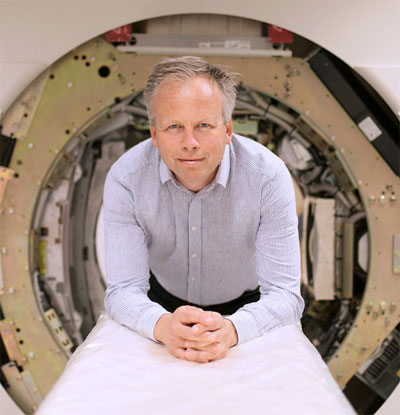GE buys Swedish start-up Prismatic Sensors

American General Electric acquires the KTH spin-off company Prismatic Sensors founded in 2012.
The technology behind Prismatic Sensors, a photon-counting X-ray detector made of silicon, will play a significant role in computed tomography. It will be possible to produce sharper images with smaller radiation doses for patients, which in turn will lead to significant progress in, among other things, cancer and heart failure diagnosis.
A key person in the company is
Mats Danielsson
, CEO of Prismatic Sensors and Professor at the Division of Medical Imaging Physics, Department of Physics at KTH. He is not unfamiliar concerning taking his research to hospitals. In 2000, he started the company Mamea Imaging to develop a detector that can handle reduced radiation doses during mammography. A technology that was acquired by the company Philips and which saves women's lives in hospitals around the world.
Mammography technology has one thing in common with Prismatic Sensors technology - a detector that counts each photo. Something unique is that the detectors are made of silicon. All competitors are developing cadmium-zinc-telluride detectors.
“Silicon is the absolute purest material produced for use in detectors. Alternative materials, including cadmium-based ones, are limited due to their imperfect crystal structure and due to impurities. Silicon-based detectors enable superior spectral resolution even for small pixels and high fluxes of photons," says Mats Danielsson.
For some years he has been on a part-time leave from KTH due to his role as CEO of Prismatic, a role that Moa Yveborg will assume from 1 January.
“I will return to KTH as a full-time Professor and look forward to a good research collaboration with GE and also believe that I will have more time for teaching. Meeting the undergraduate students really make my day," says Mats Danielsson.
The transaction is expected to be completed by January 2021.
Text: Sofia Nyström
